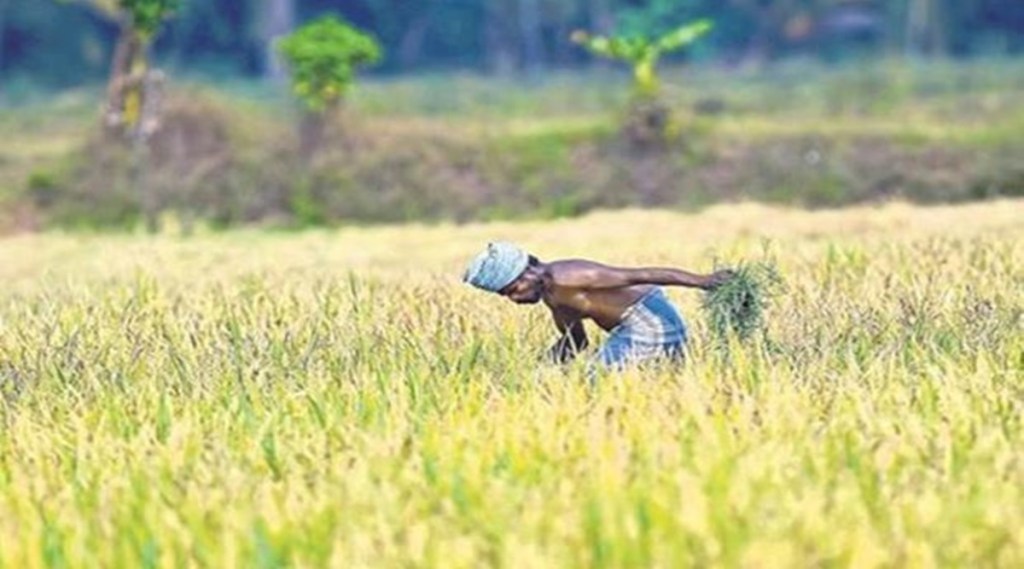With monsoon being ‘active’ over east, central, south and western regions this month, kharif crop area has surpassed last year’s level for the first time in the current season. Summer crops including paddy, pulses, oilseeds, coarse cereals, sugarcane and cotton have been sown in 59.21 million hectare (mh), marginally higher than corresponding period last year, according to the data released by the agriculture ministry on Friday.
A week ago, kharif crops sowing was 9% less than a year ago while on June 24, transplanting was lagging behind by close to 24%.
Since the beginning of July, the country has received close to 42% more rainfall over the benchmark so far. While in June, cumulative rainfall was 8% less than the benchmark.However sown area of rice at 12.8 mh is still 17% less than year ago level. Sowing of most other crops has been higher than last year’s level.
An agriculture ministry official said the window for sowing of kharif crops is till the first week of August and the pace of sowing of rice would pick up pace in the next two weeks. Sowing of oilseeds including soyabean and groundnut has been 7% more than the same period last year.
However, according to the ministry of agriculture, soyabean has been sown in 9.93 mh so far while the Soybean Processors Association of India says variety of oilseed has been sown in 11.4 mh.
Pulses have been sown in 8% more area than last year. Annually, India imports about 56% of its edible oil and 15% of its pulses consumption. “Any rise in oilseeds and pulses production is expected to reduce the country’s import dependence,” an official said.
Cotton sowing has been up by more than 6% compared to last year and coarse cereals sowing are 7% higher. Sugarcane sowing is reported at 5.3 MH which is marginally lower than the previous year.
The adequate and well distributed rainfall during monsoon months (June-September) helps in boosting kharif crop production besides ensuring sufficient moisture for the rabi crops
According to India Meteorological Department (IMD), the cumulative rainfall received during June 1-July 15 was 335 mm, which was 14% more than the normal benchmark of 294 mm for the same period. Central India and the South Peninsula have received 32% and 37% more rainfall respectively than the normal range so far. The rainfall deficiency in northwest India and east and north east regions has been 6% and 10% respectively.
As many as 30 out of the country’s 36 meteorological subdivisions recorded rainfall in the range of normal (96-104%), above normal (104-110%) and excess (110% and above) range against the benchmark – long period average (LPA). Only 6 subdivisions reported deficient rainfall.In its forecast for June, IMD had predicted a normal rainfall in the range of 92-108 % of LPA. Actual rainfall in June was 8% less than LPA.The met department had stated that cumulative rainfall during July 2022 is most likely to be in the normal range – 94% to 106 % of LPA.In April, 2022, the government had set a record foodgrain production target of 328 million tonne (MT) in the 2022-23 crop year (July-June) against 314 MT of production in 2021-22, as per the third advance estimate of foodgrain outputMeanwhile, the average water level in 143 major reservoirs in the country at present is 23% more than a year ago period, the Central Water Commission said. The water level is also 39% higher than the average of the last 10 years.


